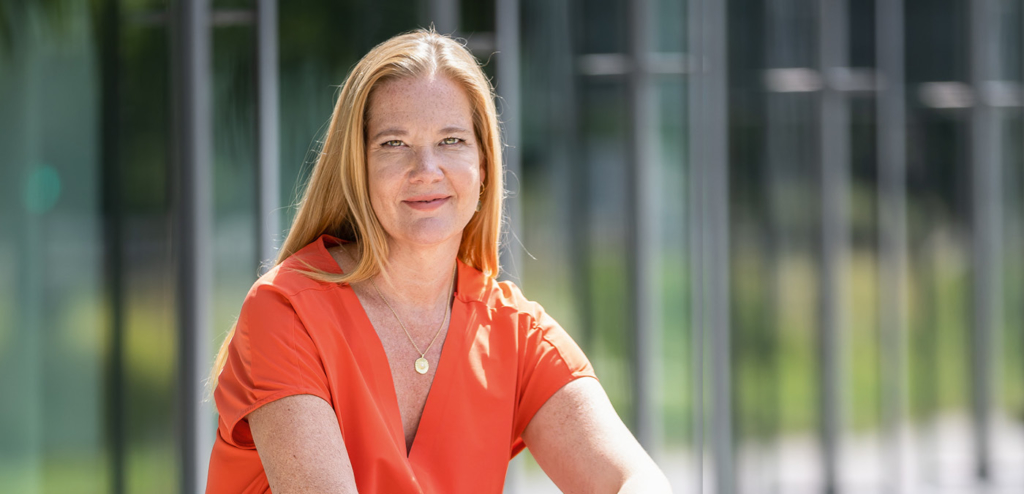Digital teamwork: How collaboration works remotely

#suddenlyremote: Due to the coronavirus pandemic, most SMA employees are working from home. New territory for many, a challenge for everybody. But also an opportunity to learn something new and to eliminate prejudices. Julia Wieland, an expert in digital collaboration, shares her ideas on how collaborating also works well in digital form.
Due to the coronavirus pandemic, many people are having to work from home, but are not used to it at all. What tips can you provide for getting teams also to work well remotely?
Anybody who is not used to working with others by digital means can quickly feel isolated or left out. I make more video appointments now because I miss analog face-to-face meetings. Previously, asynchronous exchanges via Yammer or Twitter were enough for me, but now I prefer to talk to people directly. Chatting at the coffee machine can also be recreated virtually with a webcam. Some departments have recurring appointments for a virtual chat over coffee. Anybody who wants to can dial in. We start meetings with a kind of check-in to see how people are, because it benefits us to talk about things that are going on in our lives and about challenges we are facing. All SMA employees are currently under a lot of stress, which makes feeling connected as a team all the more important. At the same time, I find that there are a lot of work meetings, perhaps too many. My recommendation is that clear allocation of tasks, careful preparation and more asynchronous teamwork — in a shared document via OneDrive, for example — can reduce the number of virtual meetings and allow more time for concentrated work.
What should companies provide to ensure that employees working remotely works well?
A good IT infrastructure is required. I really appreciate that at SMA. In order to support digital collaboration within the company, last year, we had already set up a network that helps people help themselves in the form of the Digital Guide Community. It means we are able to quickly provide support now. The guides answer questions from colleagues worldwide about tool applications during daily consultation hours. Besides the technology and help in using it, it is important to have a culture of trust. It is helpful to have an attitude where we want to complete our work well together and trust that we are all contributing to that as best we can, whether we are working on the premises or from home. Employees can also spread their working hours throughout the day differently because it fits in with their family situation better. Trust in their productivity does not depend on their Skype status. In the end, it is the result that counts, not the number of hours worked.
What will people learn from the current situation?
Previously, the prejudices that employees are not productive at home and virtual meetings or workshops are never as effective as analog meetings persisted. The current reality provides evidence to the contrary. Most formats have been digitalized and even the most insistent of opponents can be convinced as a result. Everybody is trying, despite the adverse circumstances, to be at least as productive as before. And it is working impressively well. Yes, it is more taxing to stare at the screen the entire time and the concentration and focus required are higher. However, that is exactly why workshops, in particular, are often even more effective in my view. Another effect is that because we are working remotely more around the world, we have become more equal. We are all in the same digital boat. That prevails over spatial and hierarchical distance. But I also see the varying degrees of ease or difficulty with which colleagues are adapting to the new situation and accepting offers of support. We will also need to be highly adaptable in the future and are currently learning what contributes to that.
Which tools do you most like using for digital collaboration?
I treasure the tools that enable me to see my colleagues. At SMA, those are Webex and Microsoft Teams. In most groups, I work with Teams and utilize the facility for integrating Planner and Whiteboard. My favorite tool is and remains Yammer, our enterprise social network (ESN). There is nothing else that allows us to make knowledge, ideas and experiences accessible to everyone globally and to connect people. Our ESN has become a global meeting place where we share challenges as well as laughter.
Which experiences will we be able to put to good use at SMA when the coronavirus crisis is over?
We are able to separate work and collaboration from the analog space more in our thoughts. Above all, good collaboration depends on people defining rules and ways of working as a group that help them collaborate on a trusting basis. You can adapt that to any space. In times of crisis, it becomes far more apparent who collaborates well. We at SMA have become even closer. The community spirit has become even stronger.
Julia, thank you very much for taking time for this interview.




Feel free to contribute!